Nvidia GeForce RTX 2080 Super Review
Following the recent release of the GeForce RTX 2060 Super and 2070 Super, nosotros have the last piece in Nvidia'south Super puzzle. Coming in at the same $700 price point equally its predecessor, the new RTX 2080 Super version will offer some performance increases, though nosotros doubtable we won't meet anything too dramatic considering the proposed specs and the fact that Nvidia doesn't need to cannibalize sales of the 2080 Ti, nor does it have whatsoever direct competition at this price point..
The GeForce RTX 2080 Super adds two extra SM units for a 4% increase in cores, pregnant this is now a fully enabled TU104 silicon. This is the same silicon used by the standard RTX 2080, as well as the 2070. There's also a 9% frequency uplift for the base clock, and a half dozen% increment for the boost clock. Due to the way GPU boost works though, we conceptualize this will be closer to a iii to four% increase in frequency.

The GDDR6 memory as well sees a boost and now we're looking at a superlative data transfer speed of 15.5 Gbps, upwardly from fourteen Gbps, an eleven% comeback in memory performance. These upgrades have increased the TDP by 16% from 215 watts up to 250 watts.
Nvidia says the RTX 2080 Super delivers a robust 4K feel along with real-time ray tracing. For this review we're going to wait at the 4K gaming experience, while skipping over ray tracing for now as our opinion of the technology in its current land hasn't changed since we covered information technology many months ago.

We do programme to revisit ray tracing on a roundup piece with the Super graphics cards soon though, so if you're interested in the technology that volition no doubt be worth a read.
For testing we've used our usual gaming rig comprised of an Intel Core i9-9900K clocked at 5 GHz with 32GB of DDR4-3400 memory. The latest drivers available at the time of testing have been used. We accept 13 games to look at earlier the usual functioning breakdowns and cost per frame data.

Benchmarks
The newest game in our battery of benchmarks, F1 2022, sees the 2080 Super deliver 75 fps on average making it -- drum scroll please -- 4% faster than the standard 2080 and 17% slower than the 2080 Ti.

Thankfully the margin is a little more than noteworthy in Battlefield V. Here the 2080 Super offered an 8% performance uplift over the older 2080 and that basically put it on par with the newly discontinued Radeon 7.
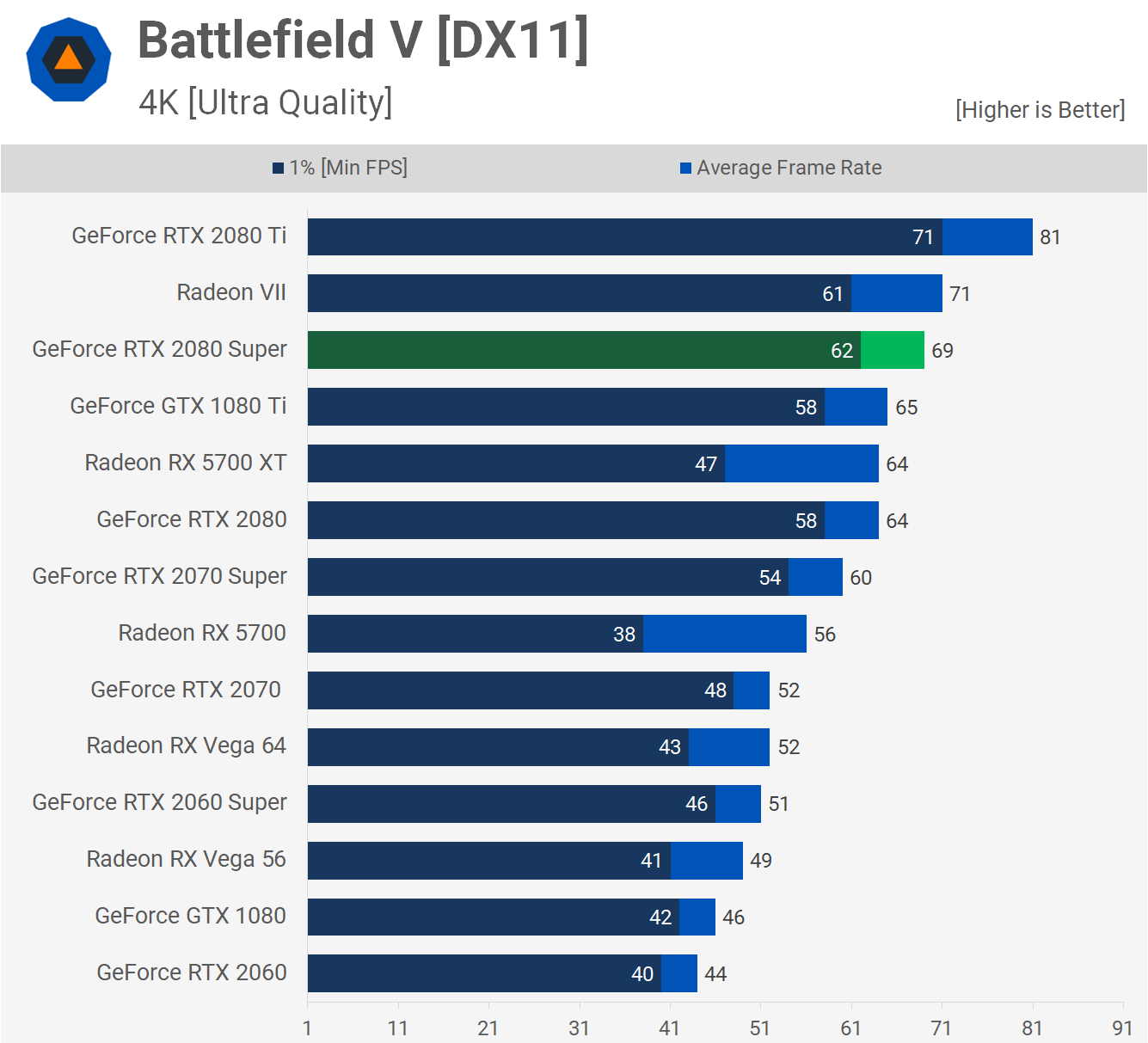
Rainbow Vi Siege sees a small-scale 3% boost to the boilerplate frame rate over the standard 2080, though we practice run across a 6% improvement for the 1% low performance. This time the 2080 Super was 15% slower than the Ti model.

Can we interest yous in i-2 fps more than performance? Good, because that's all you're going to become in Metro Exodus. That's to be expected given the specs.
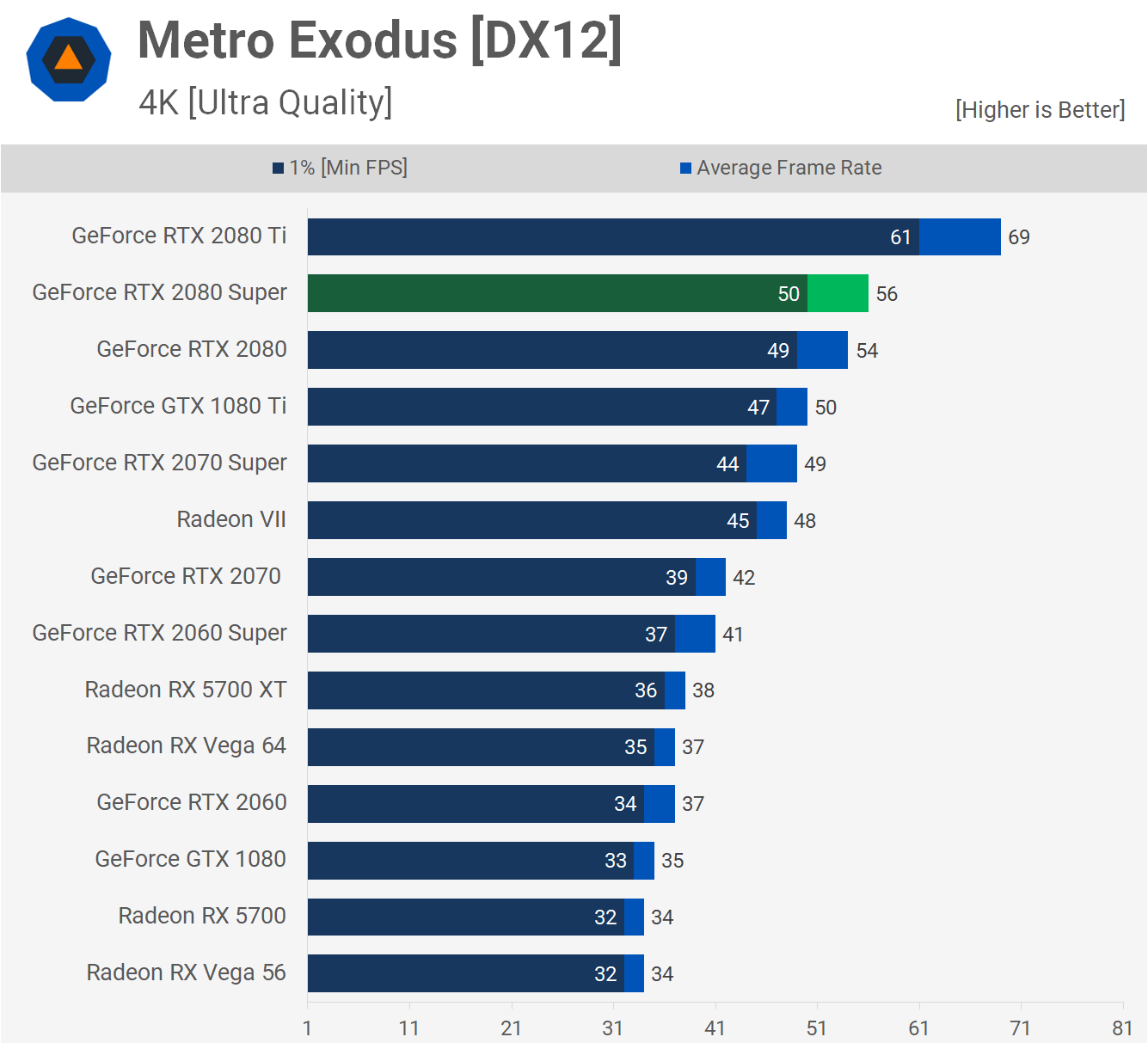
A 6% performance heave in Resident Evil 2 may be cause for celebration (for the same price if nosotros're totally fair), taking us to 66 fps on average at 4K, for some nice smooth gameplay.
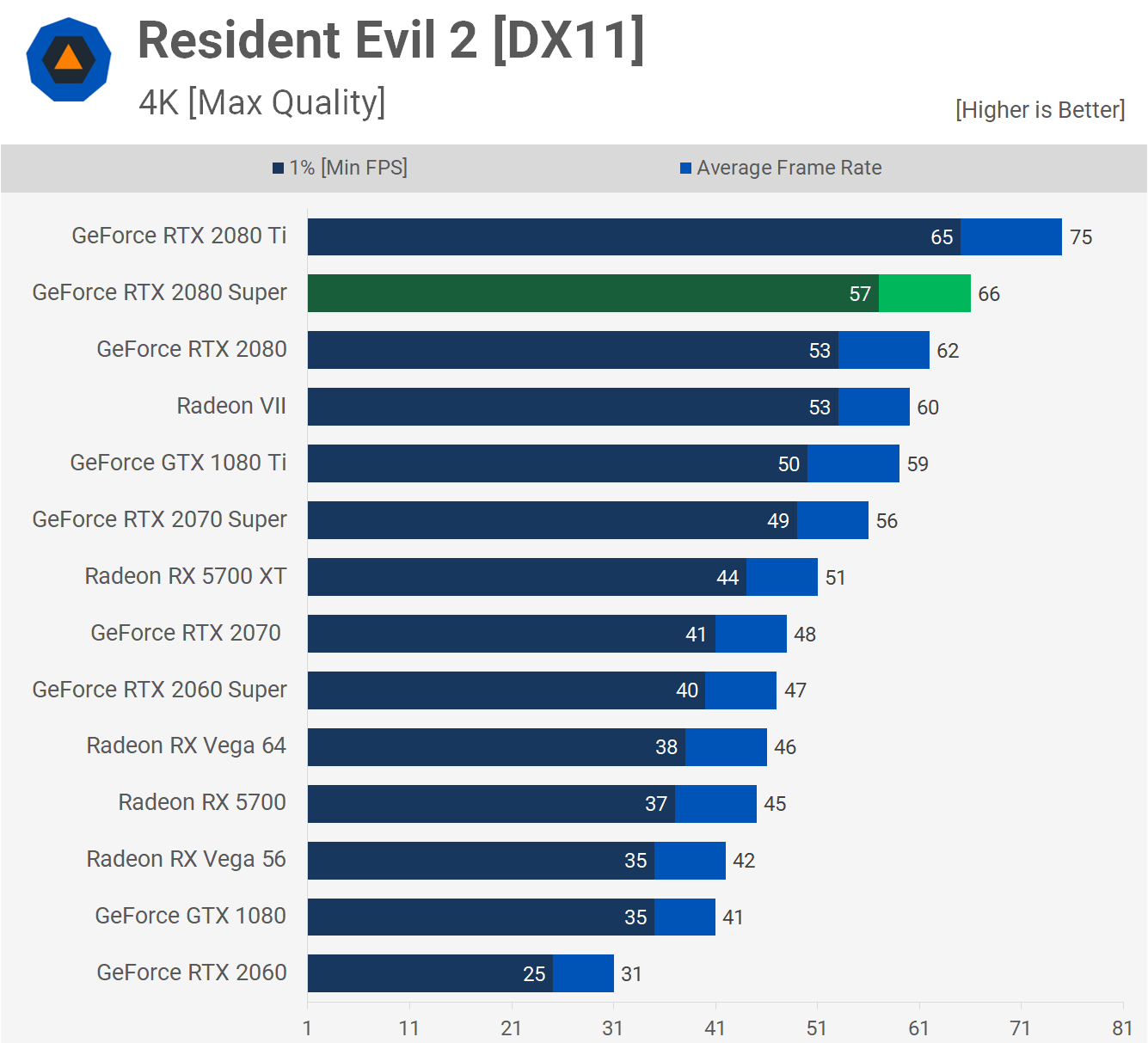
We didn't quite hitting 60 fps in Shadow of the Tomb Raider just given the 2080 Ti just falls short that's not surprising. The actress retentivity bandwidth does let the 2080 Super to vanquish the vanilla 2080 by an 11% margin in this title.

Memory bandwidth isn't that important in Fortnite, then a minor 3% performance uplift over the standard 2080 for 72 fps on average at 4K. Nonetheless it was a nice smooth and very crisp looking gaming experience.
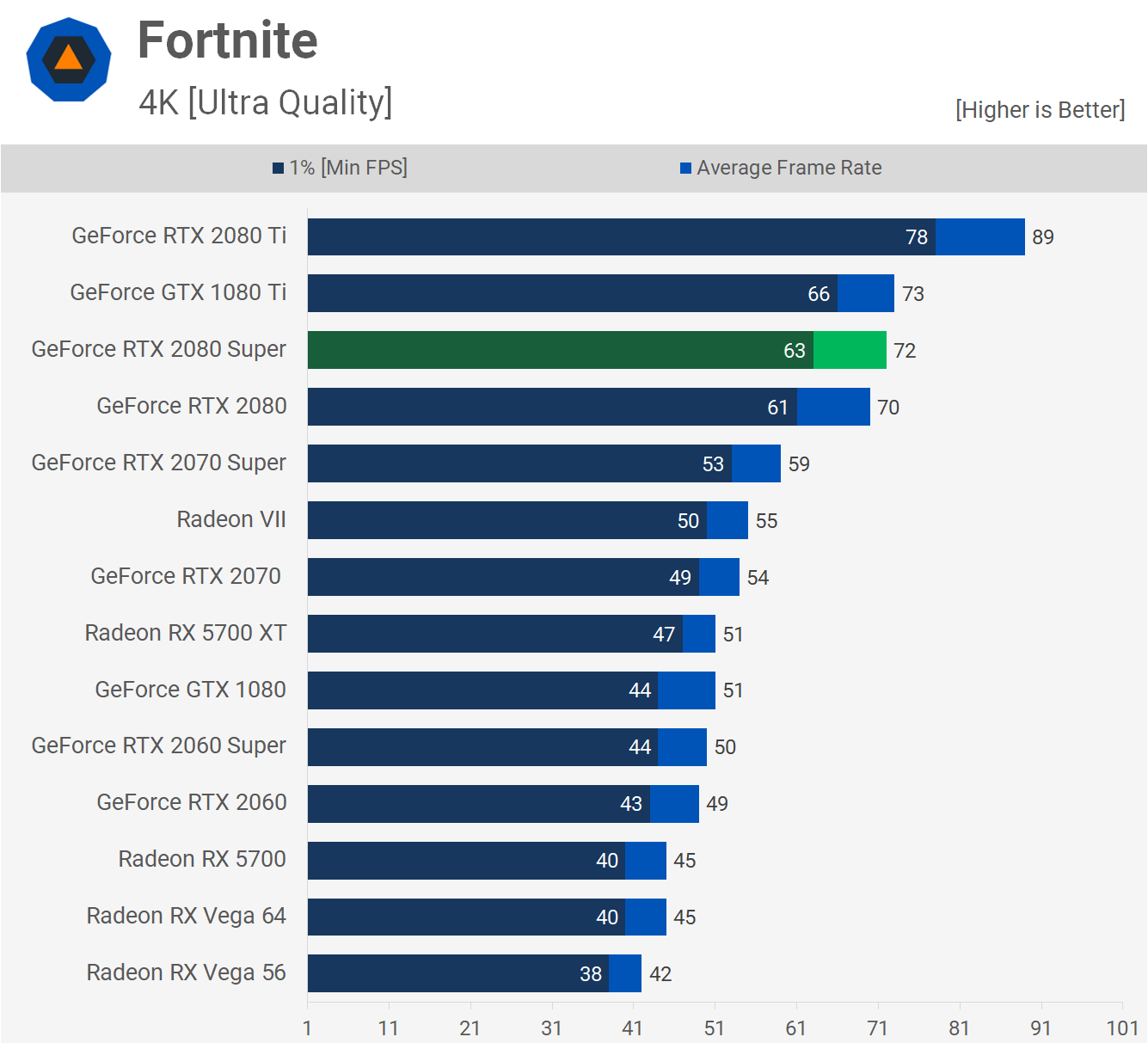
When testing with The Partition 2, the Super provided united states of america with a four% performance heave over the standard RTX 2080.
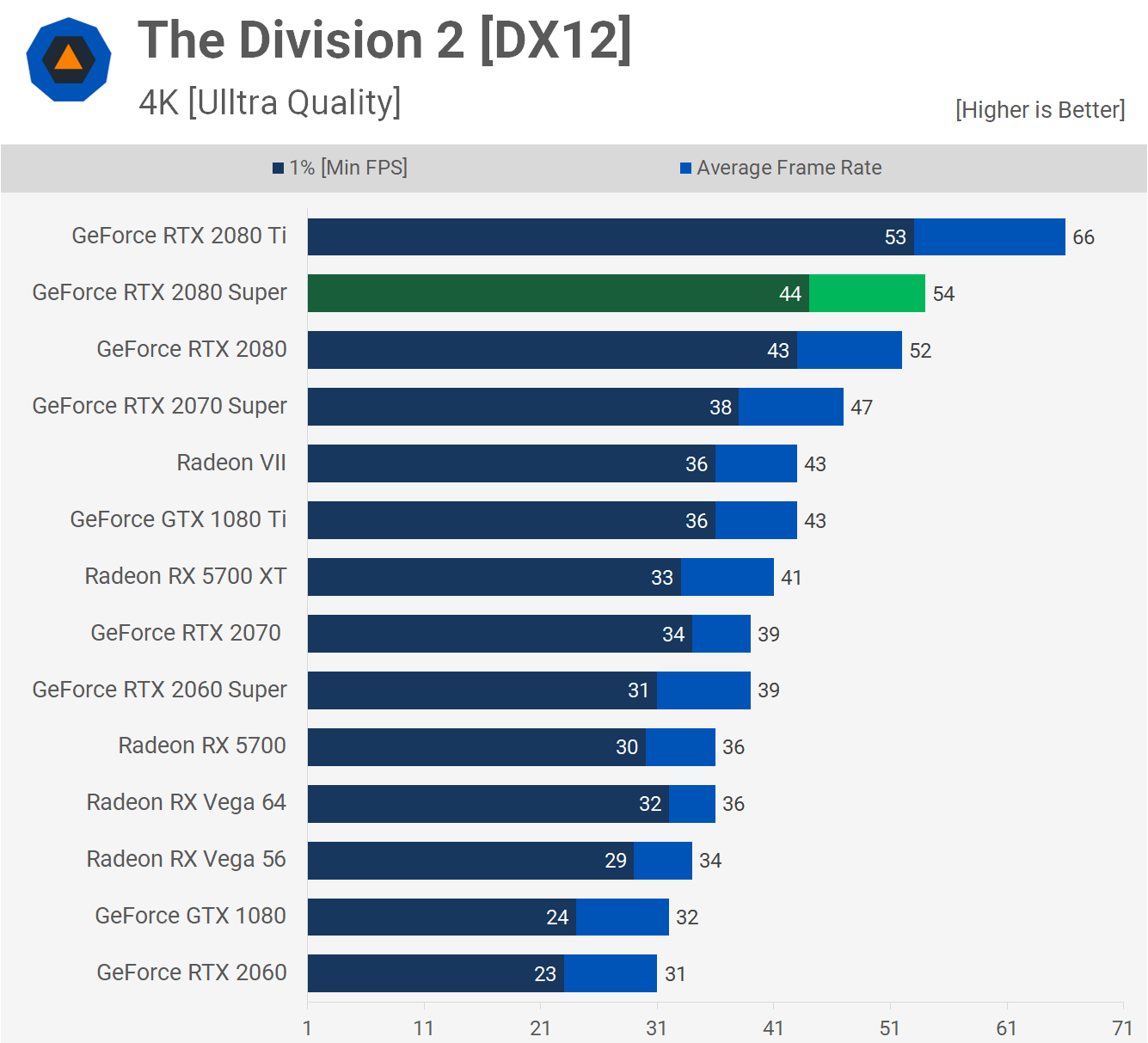
Clay Rally 2.0 gets a three fps operation boost. Ignore the 1% low result and we see a breathtaking four% performance uplift.

Forza Horizon 4, similar Shadow of the Tomb Raider, is a game that benefits from some extra memory bandwidth at 4K and here we encounter a more significant 7% performance boost, taking the 2080 Super to 92 fps on average.

Nosotros besides run across a 6% functioning boost in Far Weep New Dawn which allowed the 2080 Super to but border out the Radeon VII.

The 2080 Super provided a 4% performance improvement from the standard 2080 in World State of war Z.

Finally nosotros take Assassinator'southward Creed: Odyssey for a 3 fps operation uplift, though that does equate to a six% increase in frame rate.

Power Consumption and Temperatures
The RTX 2080 Super consumes 5% more ability than the standard 2080, which sounds correct given the specs and what we just saw performance-wise. This means it consumed 6% less power than the Radeon VII, but 24% more than the new 5700 XT.
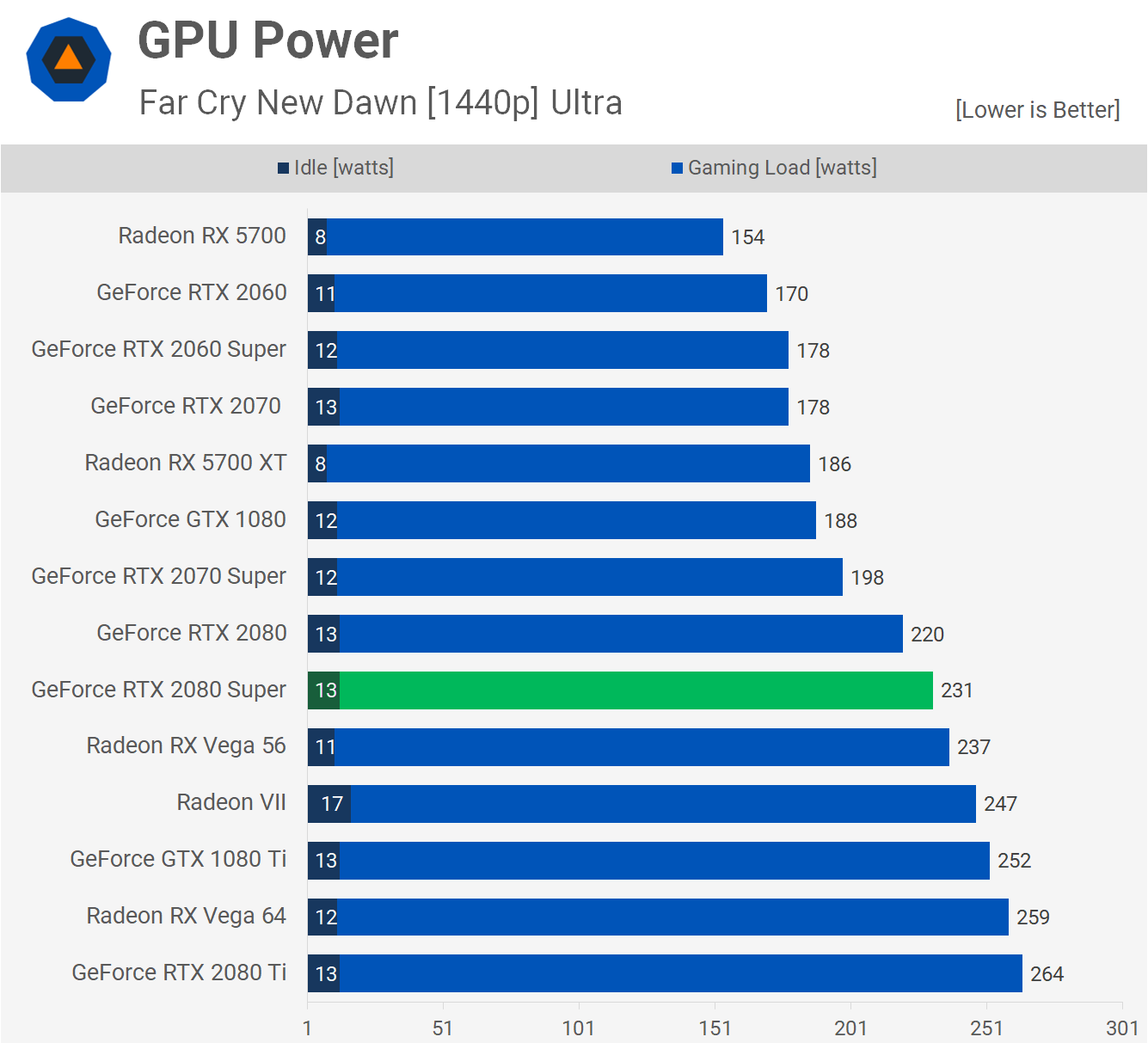
We too measured total system consumption from the wall and here we see the faster 2080 Super increased total describe by 12% over the standard 2080. At that place are a few reasons for this increase, the GDDR6 retention will be consuming more power given the 11% overclock, and the CPU will also be working slightly harder given the increase in performance. What'southward interesting is that the 2080 Super does push button organisation consumption higher than that of the Radeon VII.

We won't go into overclocking as with all Turing GPUs you're likely looking at a ~ten% performance boost at all-time through manual tinkering. The Founders Edition model we tested maxed out at 72 degrees in a 21 degree room and there it maintained a cadre clock speed of 1905 MHz with a fan speed of 1820 RPM, making this graphics card rather absurd and quiet afterwards an hour-long test in F1 2022.
Performance Summary
The RTX 2080 Super looks to be the least "super" graphics card from Nvidia yet, simply before nosotros get as well bummed out with this release, permit'south take a wait at some functioning breakdown graphs and cost per frame data.
RTX 2080 Super vs. RTX 2080 @ 4K
On boilerplate the 2080 Super was 5% faster than the standard 2080. For testing we used the MSI RTX 2080 Knuckles which comes with a small overclock that sees it maintain 1905 MHz under load, the same operating frequency as the 2080 Super FE card.
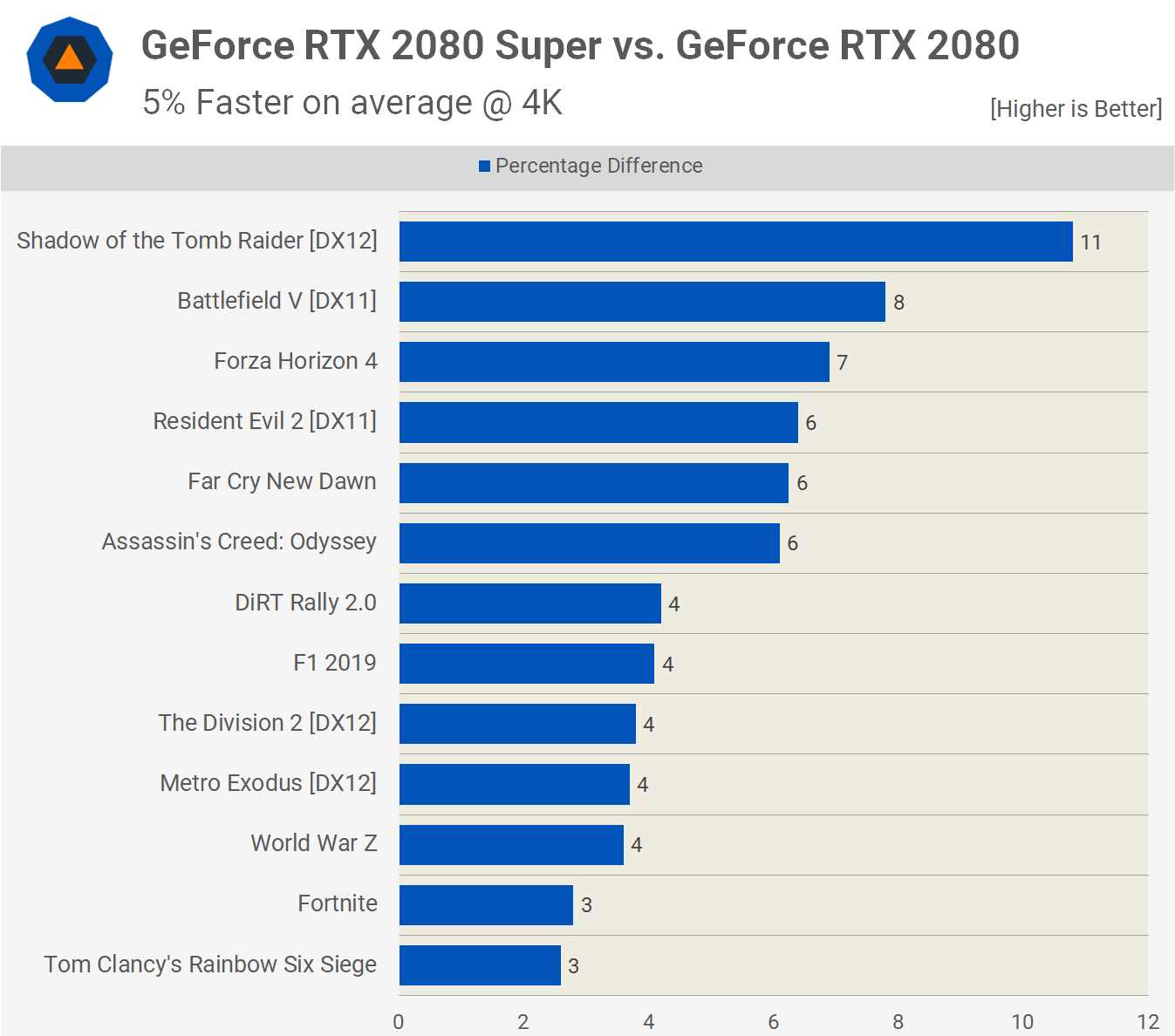
RTX 2080 Super vs. RTX 2080 @ 1440p
For those of you gaming at 1440p on average y'all're looking at a half dozen% performance uplift, similar to what we saw at 4K. Those of you who were planning to spring the gun anyway, will see some actress frames for the same cost, and then at that place's that.
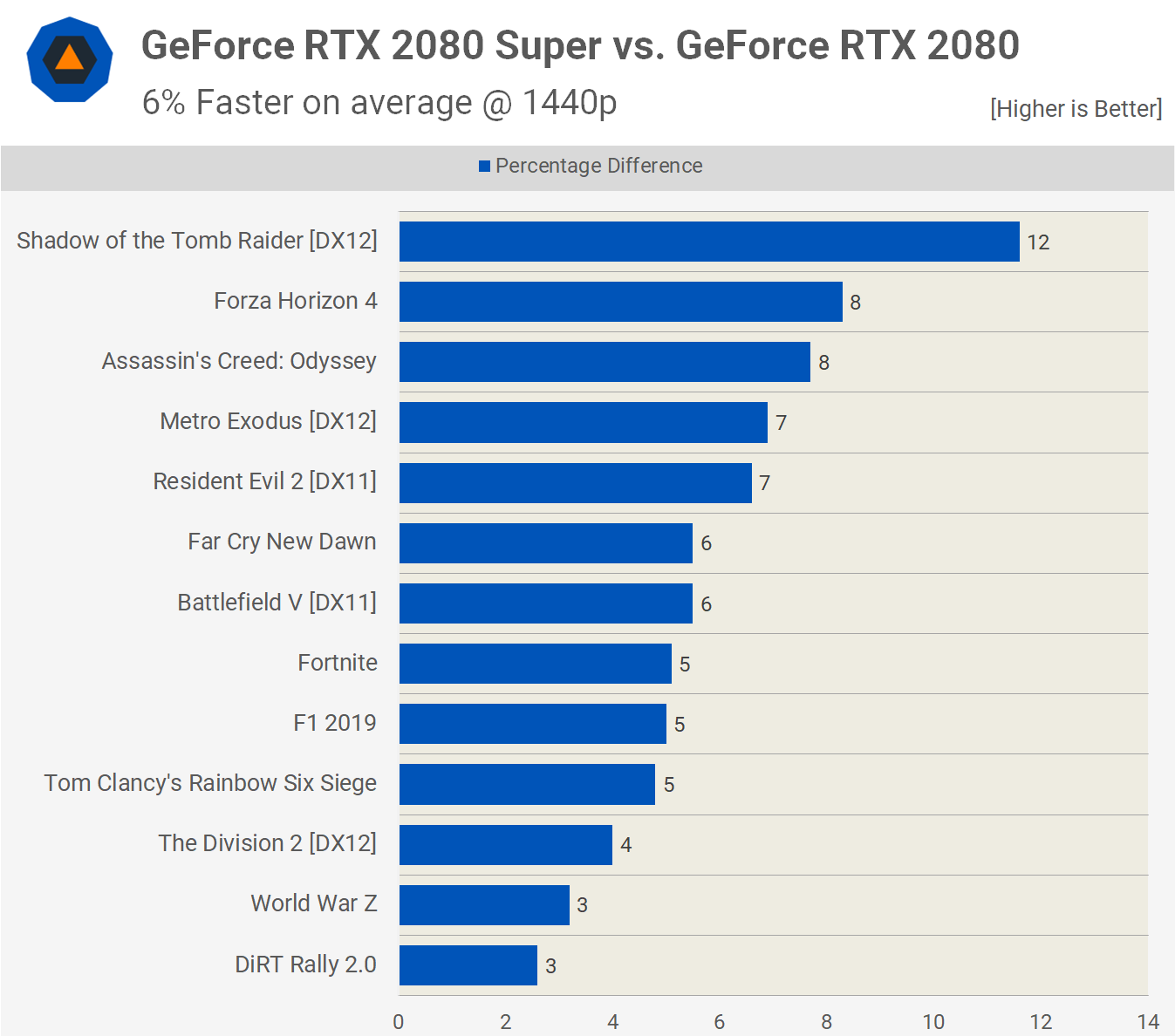
RTX 2080 Super vs. RTX 2080 Ti @ 4K
On average the RTX 2080 Super was 16% slower when compared to the 2080 Ti. This is not a massive divergence and information technology is effectually 30% cheaper, so if yous're not after the most premium 4K feel possible, the 2080 Super looks to be a decent choice.
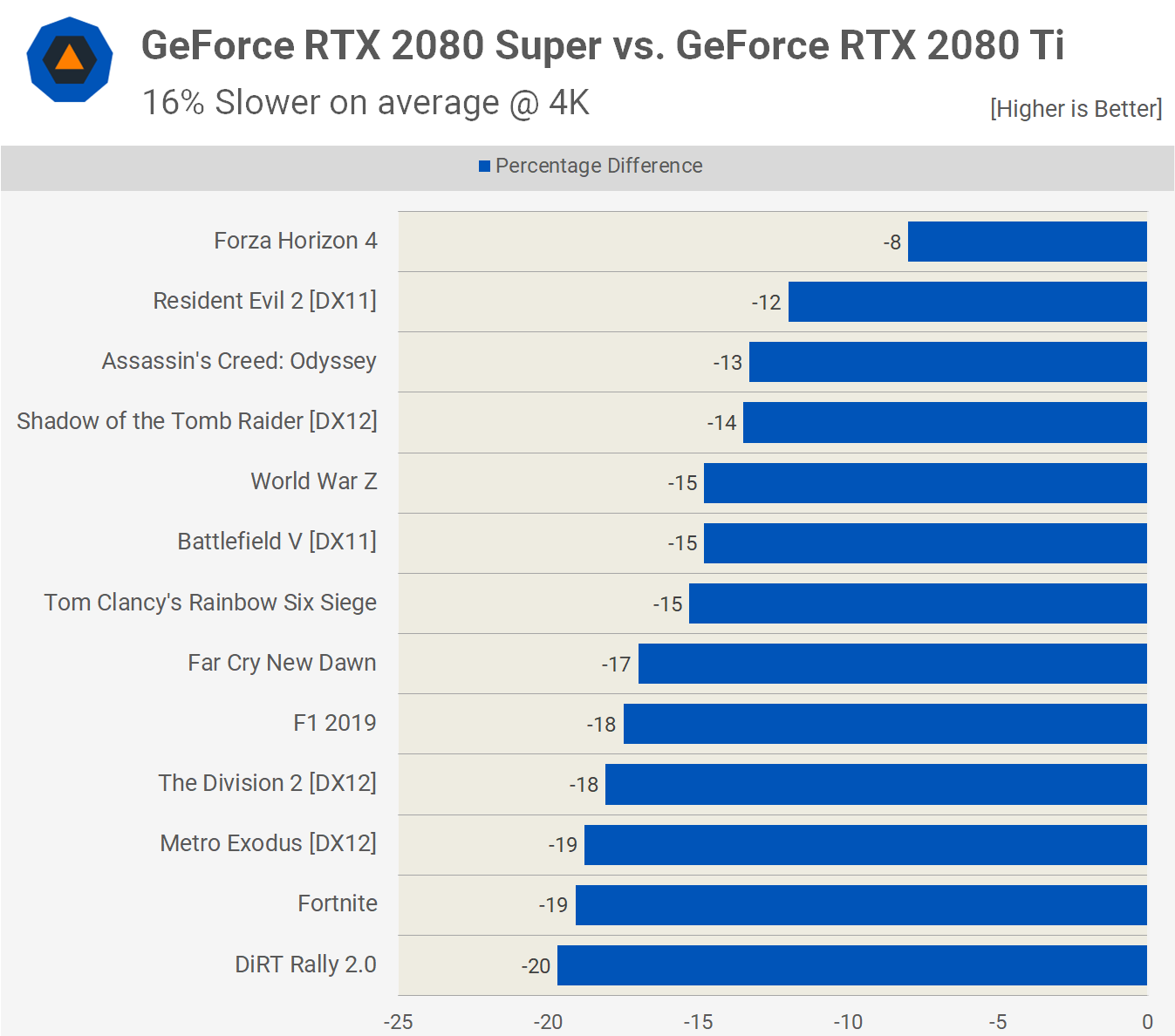
RTX 2080 Super vs. RTX 2080 Ti @ 1440p
For gaming at 1440p the 2080 Ti looks to be a bit of a waste every bit the more affordable RTX 2080 Super was just 12% slower and never more 19% slower worst instance.
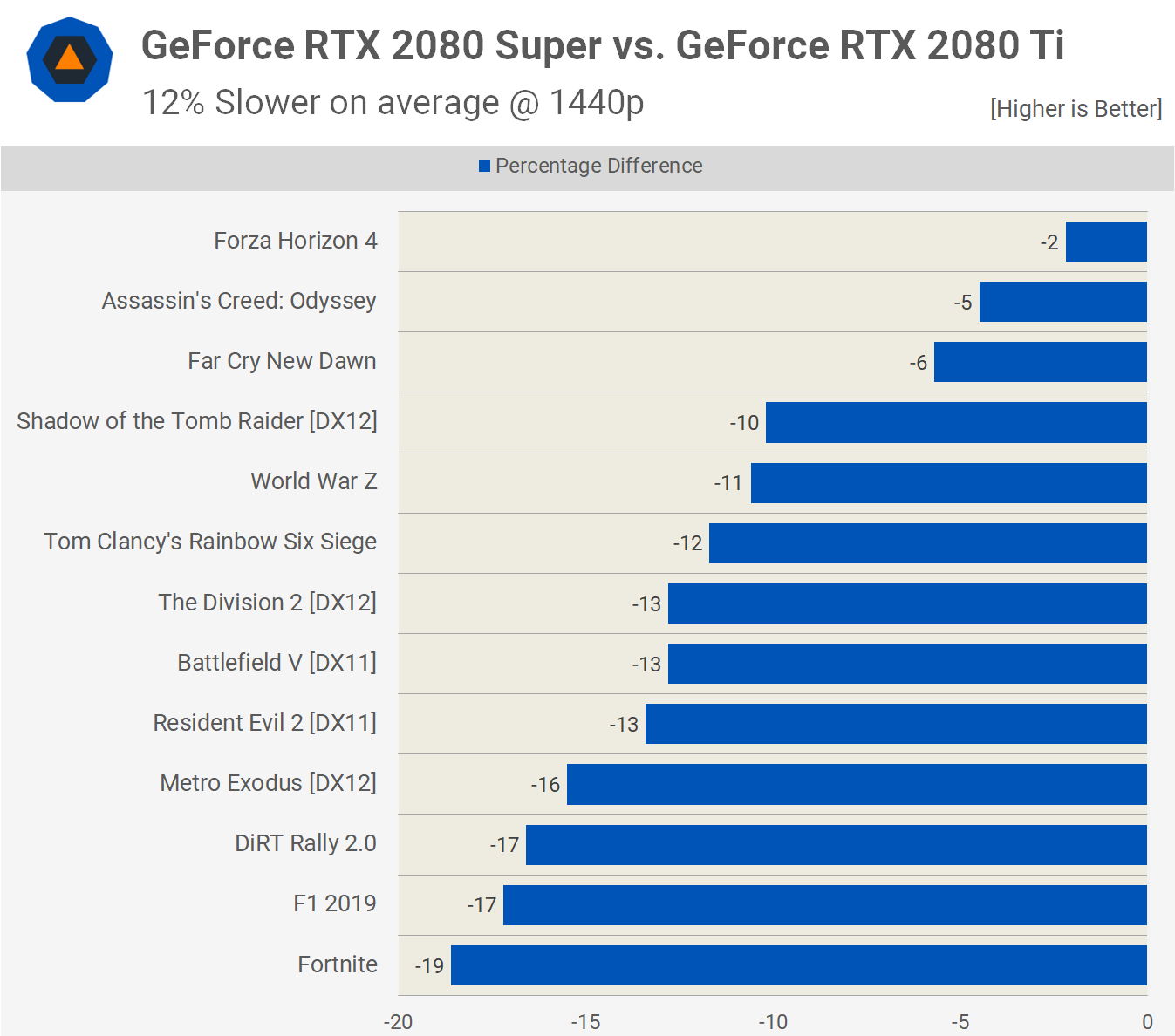
RTX 2080 Super vs. Radeon RX 5700 XT @ 4K
When compared to AMD'southward new Radeon RX 5700 XT, the 2080 Super was on average 26% faster at 4K. Do consider that the 2080 is considerably more expensive (it costs 75% more), notwithstanding the GeForce was never more than 47% faster. Plainly the higher-terminate you go, the less value you become so you'll accept to decide if paying that kind of price premium for the ability to run at slightly college quality settings is worth it.
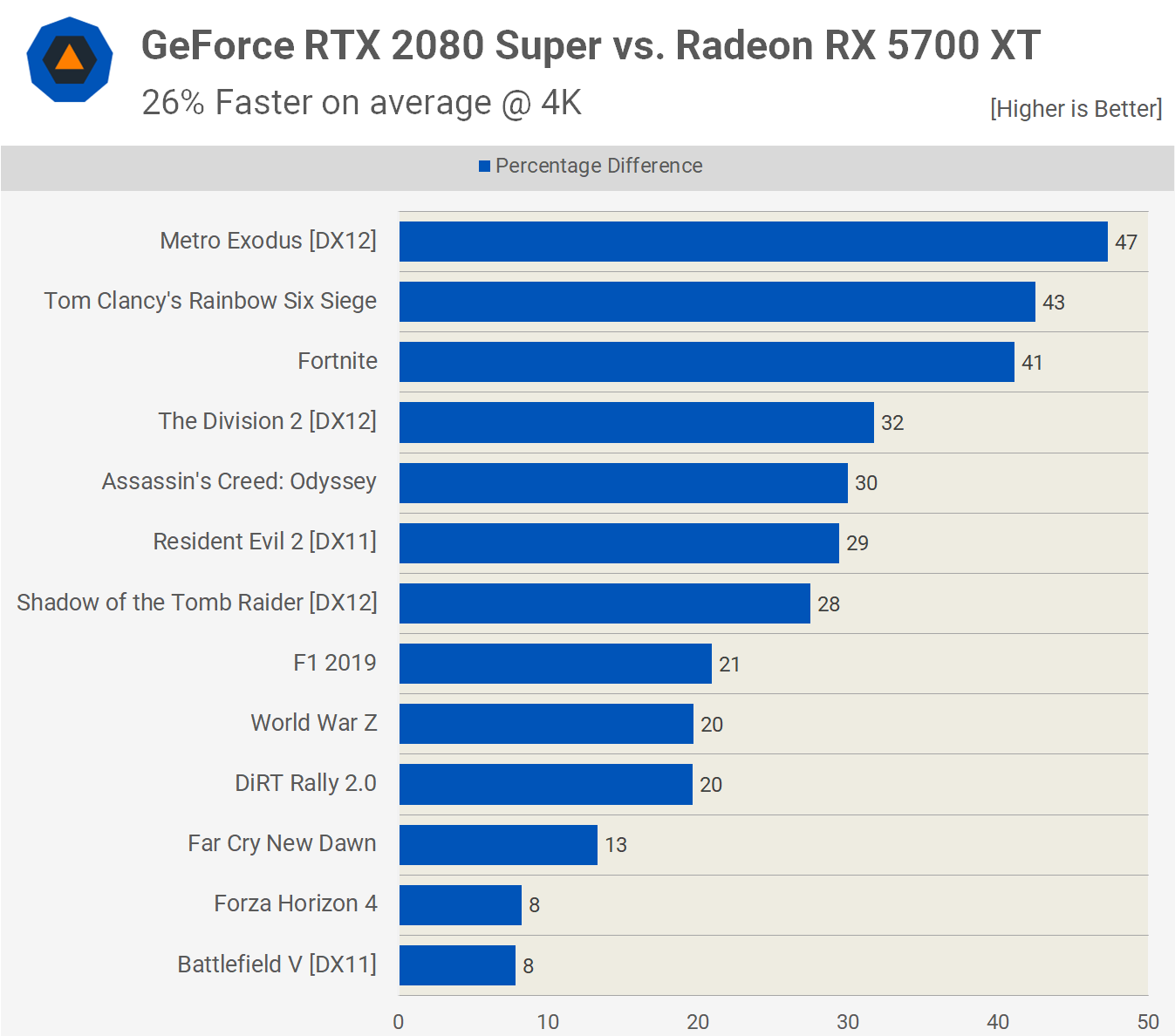
RTX 2080 Super vs. Radeon RX 5700 XT @ 1440p
When gaming at 1440p the RTX 2080 Super is less attractive as it was merely 17% faster than the 5700 XT on boilerplate.
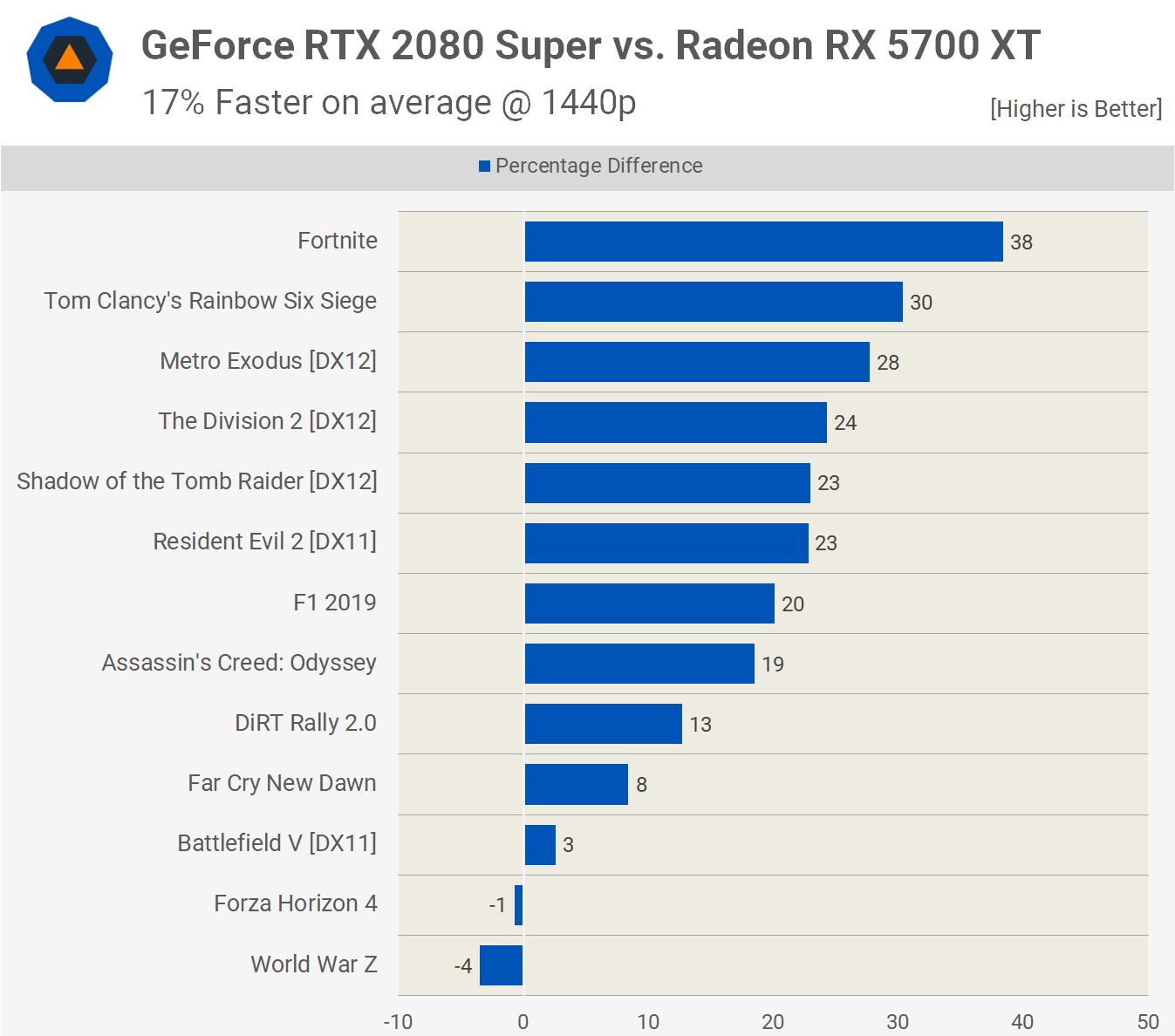
Cost per Frame and Conclusion
Starting with a MSRP comparing and using the 4K gaming data, nosotros see that the RTX 2080 Super comes out at a price of $9.85 per frame. Given it comes in at the same $700 MSRP as the original 2080, that makes it roughly 6% cheaper per frame. Compared to the 5700 XT yous are paying 41% more per frame which is a massive price premium, but that'southward just what you're faced with when going up a level in performance.

The 1440p results are less favorable, over again looking strictly at MSRPs. We see that the 2080 Super costs $5.73 per frame, or 5% cheaper than the standard RTX 2080. Information technology'due south also 52% more than costly than the 5700 XT per frame, so unless yous demand to go from around 106 fps on average to 122 fps, the Radeon GPU is a more sensible purchase.
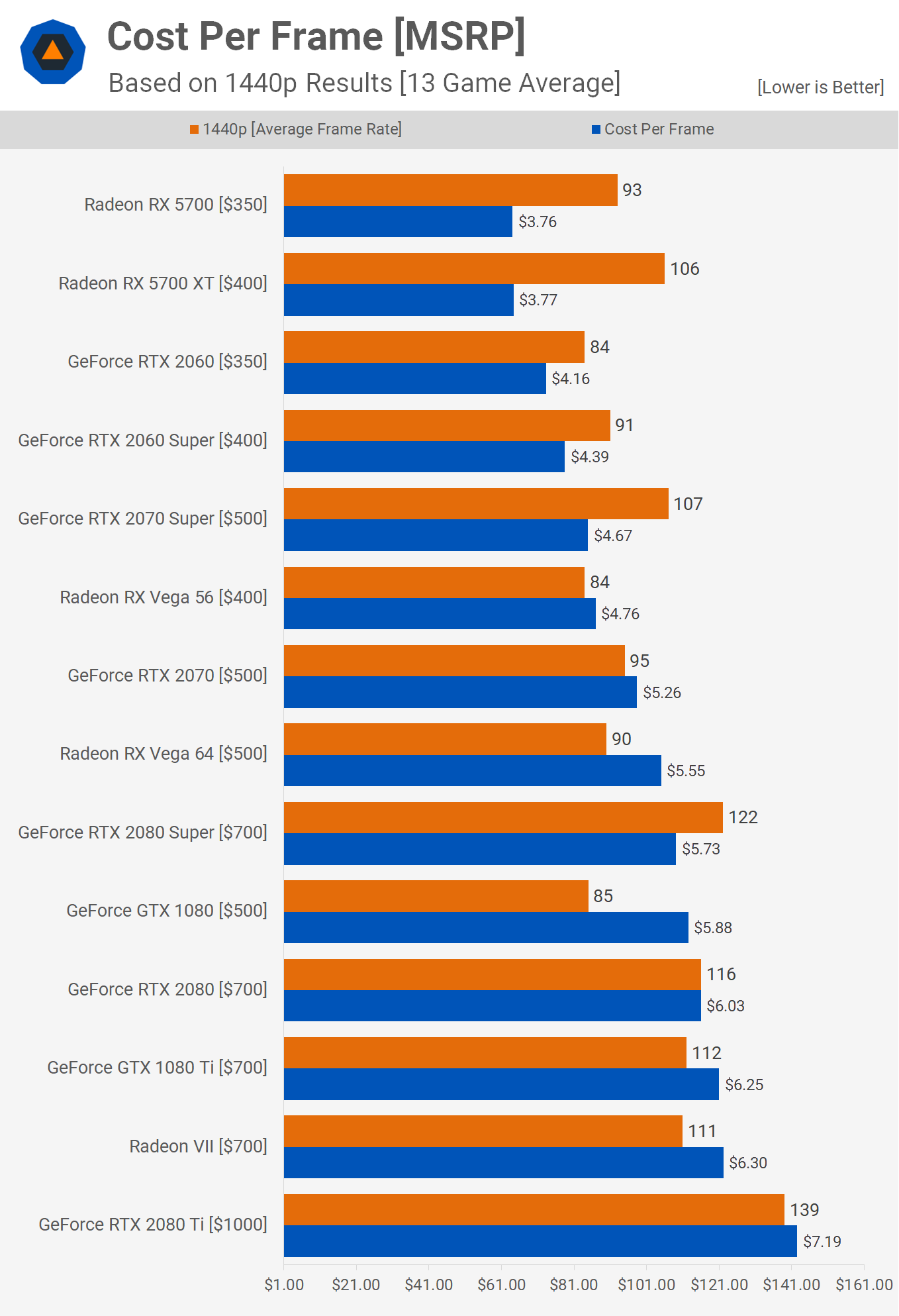
But what about current market pricing? The only major modify in the analysis would be that the RTX 2080 Super volition continue its price, while before long to be extinguished RTX 2080 cards take dropped down to $630 for some models. In that example the standard 2080 offers a better value given the modest modify in performance.
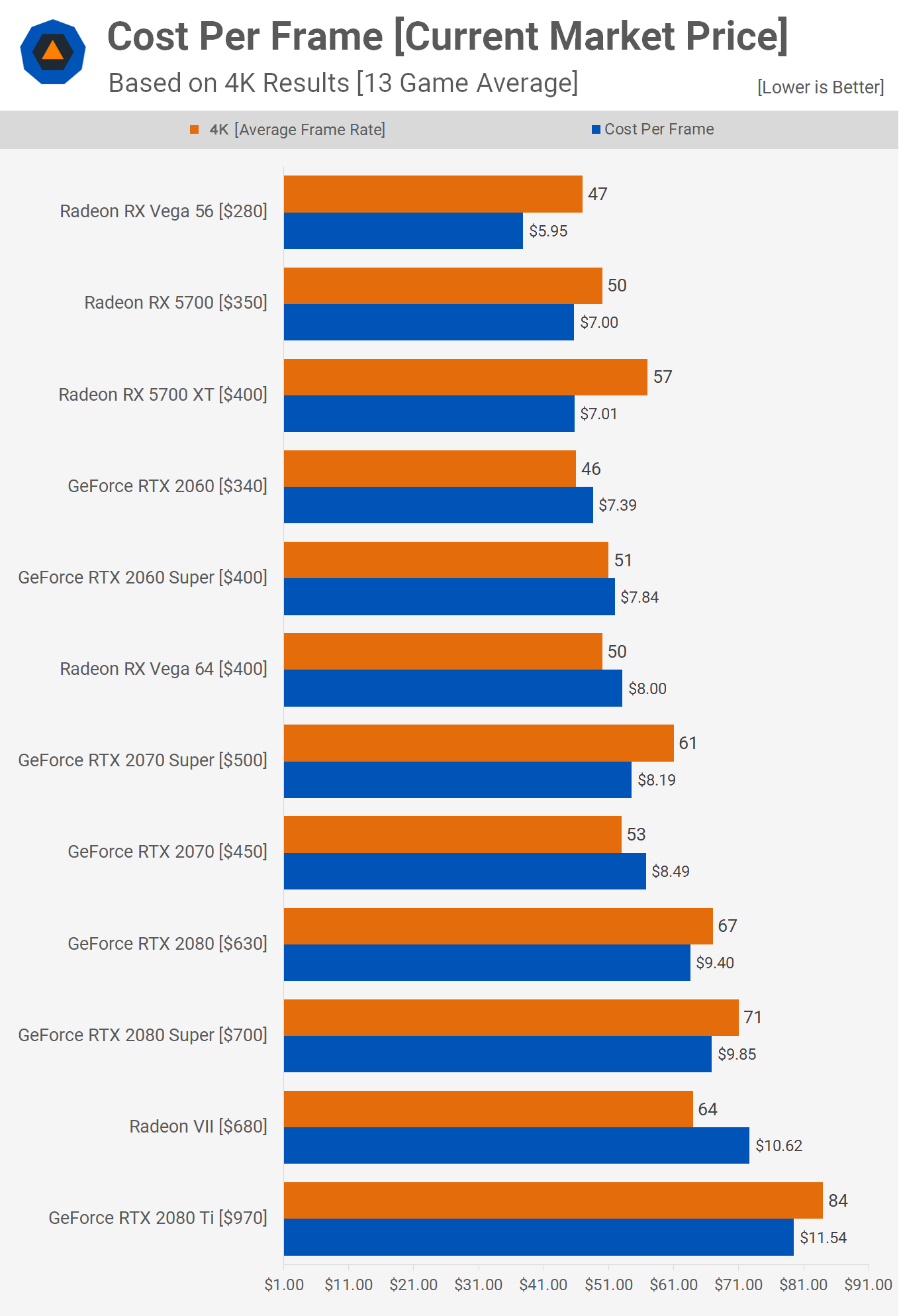

Earlier this calendar month we got the RTX 2070 Super and 2060 Super. The 2070 Super provides 12% more performance than the standard model and nosotros liked the boost enough to impale off nearly competitors at this price betoken, though the Radeon RX 5700 XT comes very shut in operation for less money. The 2060 Super, on the other paw, gave the states naught. It costs xviii% more than the standard 2060 and was just 8% faster on average. We're seeing a like story with the RTX 2080 Super, where the performance lift is even less significant.

Overall, the RTX 2080 Super is a solid premium-priced GPU, it's but not particularly exciting. Officially discounting the RTX 2080 to $600 would accept been worlds more thrilling in our opinion. Put in other words, the RTX 2080 Super is ~ix% faster on average than the GTX 1080 Ti at both 1440p and 4K. Then we're getting a performance boost, at the verbal same price signal, almost two and a half years later. Without a doubt, GTX 1080 Ti owners tin rejoice at the news.
Shopping Shortcuts:
- GeForce RTX 2080 Ti on Amazon, Google Express
- GeForce RTX 2070 Super on Amazon, Google Express
- GeForce RTX 2060 Super on Amazon, Google Express
- AMD Radeon RX 5700 XT on Amazon, Google Limited
- AMD Radeon RX 5700 on Amazon, Google Express
- GeForce GTX 1660 Ti on Amazon, Google Express
- AMD Ryzen 9 3900X on Amazon, Google Limited
- AMD Ryzen 5 3600 on Amazon, Google Express
- AMD Ryzen 5 2600X on Amazon, Google Express
Source: https://www.techspot.com/review/1881-geforce-rtx-2080-super/
Posted by: youngbort1991.blogspot.com


0 Response to "Nvidia GeForce RTX 2080 Super Review"
Post a Comment